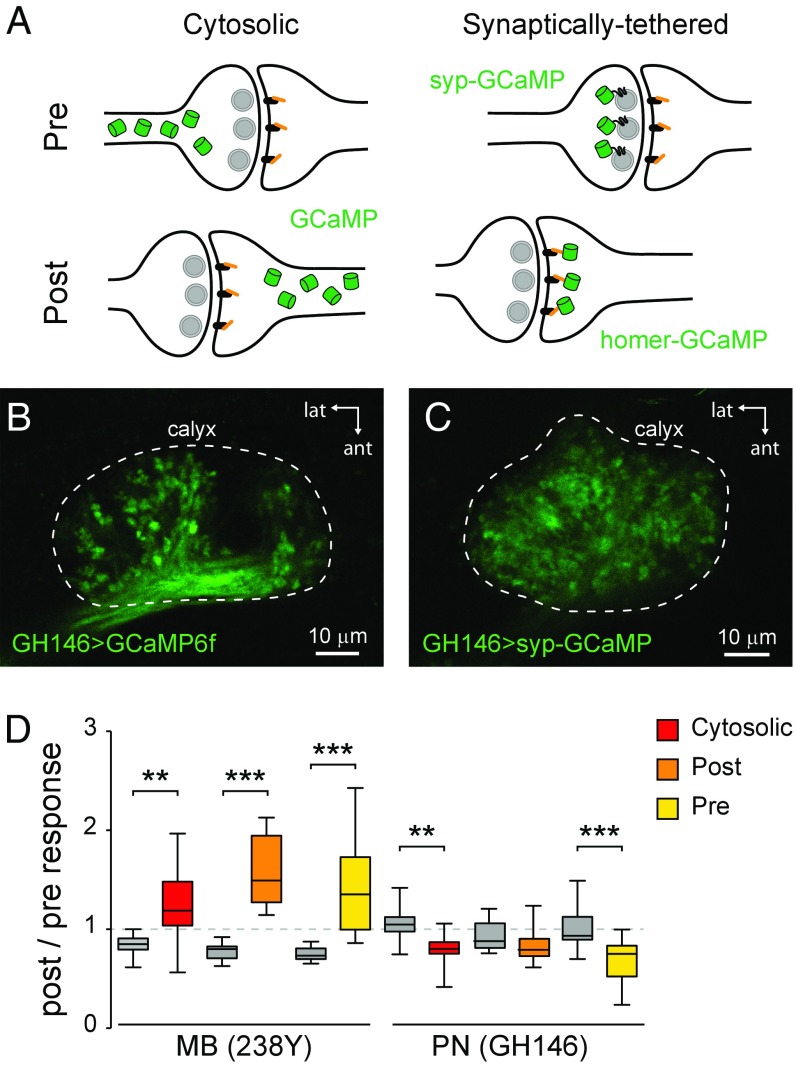Fig. 2.
Plasticity in odor-evoked Ca2+ responses is not attributable to upstream olfactory projection neurons. (A) Drawing of the subcellular and pre/postsynaptic localization of GCaMP variants at the projection neuron (PN)–MB synapse: cytosolic (UAS-GCaMP6f), presynaptically tethered (syp-GCaMP3), or postsynaptically tethered (homer-GCaMP3). (B) Expression of cytosolic GCaMP in PNs, imaged in the calyx, where PNs synapse with MB neurons (unlabeled). GCaMP was expressed with the PN-specific driver GH146-Gal4. (C) Presynaptically tethered syp-GCaMP3 expression in PNs, imaged in the calyx. Note the specific localization of GCaMP in the synaptic terminals and its absence in the axonal shafts. (D) Box plots showing the change in odor-evoked Ca2+ responses following pharmacological elevation of cAMP with forskolin (n > 12 per group). Because information flow in the calyx is bidirectional, all three GCaMP variants were expressed both in the MB neurons (238Y) and PNs (GH146), and the calyx was imaged with all six combinations. Ethyl butyrate was presented as the odorant. **P < 0.01, ***P < 0.001 (Sidak).

